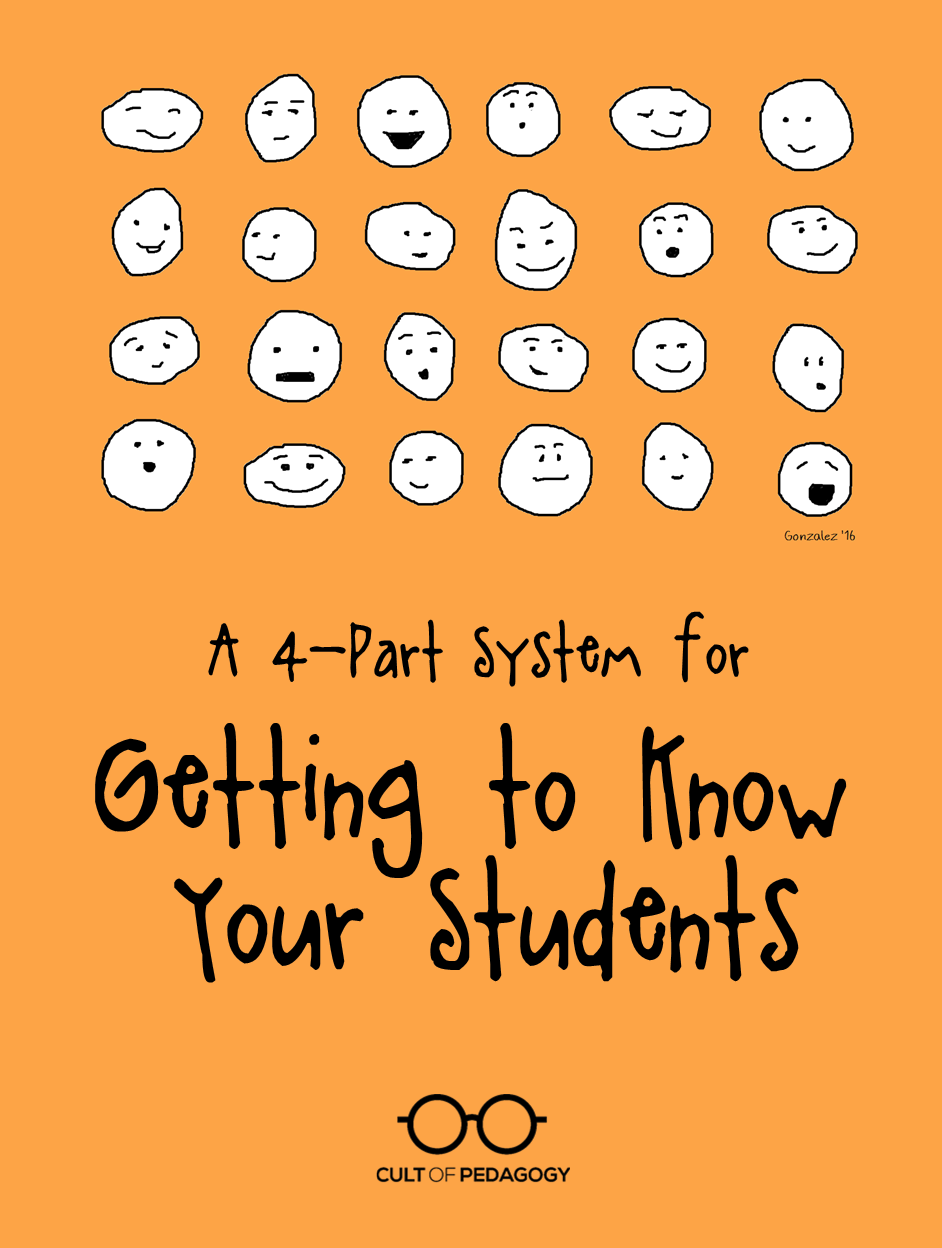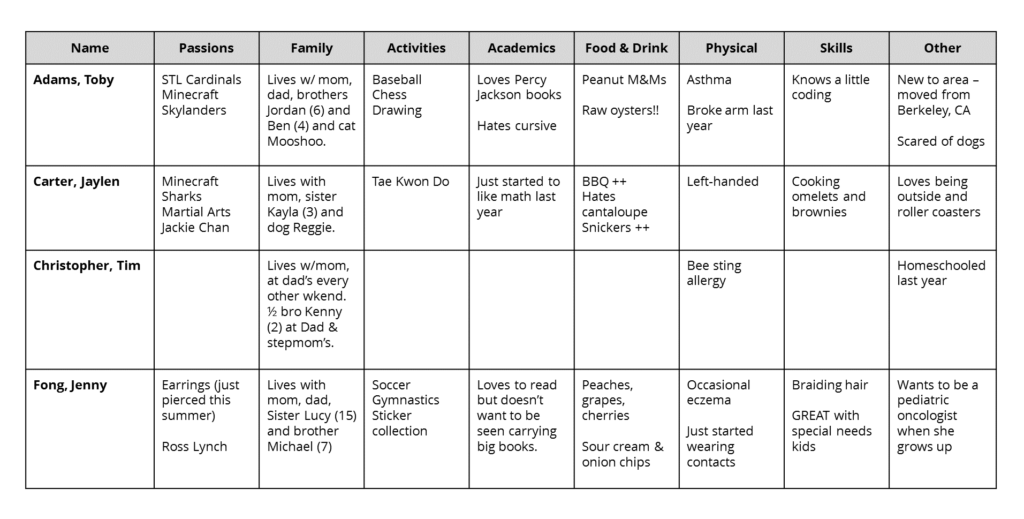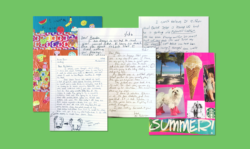
The biggest paradigm shift in my teaching career was the day I found out one of my students was homeless. Robert was talkative, academically average, fooled around a little too much. Some weeks he turned in good work, and other times he didn’t. Among the 134 students that filled my rosters in my third year of teaching, he was a pretty typical seventh grade kid. But in March of that year, Robert was getting on my nerves: not turning in some of his work, talking out in class more than usual. I responded as I often did, with reprimands and lunch detention and generally feeling disappointed in him.
Then one afternoon, our school counselor mentioned in passing that Robert’s family was homeless. They had been living in a shelter for the last two months. My whole view of Robert changed in an instant. I thought about how much he’d probably gone through in the last few months, all the things he’d probably seen, how unpredictable and unstable his life was, and how all that time he managed to show up to school most days, turn in some assignments, and basically hold it together.
At that moment, I realized I didn’t really know my students at all.
Building solid relationships with your students is arguably the most important thing you can do to be an effective teacher. It helps you build trust so students take academic risks, allows you to better differentiate for individual needs, and prevents the kinds of power struggles often found in poorly managed classrooms.
Although most teachers value relationship-building, most don’t have any kind of systematic approach for making that happen. We get to know students whenever there’s time to squeeze it in, and this yields uneven results: Extroverted students make themselves known right away, others we get familiar with on a surface level, and far too many go largely unnoticed.
You’ll get to know your students faster and more thoroughly if you have a system in place, a way to make sure you give sufficient attention to every child and store the information you gather for easy access later. In my years teaching at the middle school and college level, I developed a 4-part system that worked beautifully for me, and I think it will work for you as well.
Part 1: Break the Ice
Classroom icebreakers are a classic strategy for helping everyone feel more comfortable on the first day of school. But not all icebreakers are created equal: Many can be irritating, others are embarrassing, and some do nothing to actually help students get to know each other, so it’s important to choose icebreakers that really help you and your students get acquainted in a comfortable, fun way.
You may already have some go-to icebreakers that you like. If not, here are three classroom icebreakers that students love.
Part 2: Take Inventory
In the first few days of school, distributing a getting-to-know-you questionnaire to students (or to their parents, if you teach young kids), is the most efficient way to gather information about every child. Most teachers already have some version of this, where we ask about students’ favorite books or music, learn about their favorite hobbies and sports.
On my forms, I have also asked about whether my students have any health or allergy issues, what kind of technology they have at home, and whether their time is split between more than one household. For older students, I would also ask about outside responsibilities like jobs or extracurricular activities, so I know what else is competing for students’ time. If you don’t already have a form you like to use, I have created a nice set of editable Student Inventories for four separate age groups that will get the job done.
While you’re at it, take time now to learn how to pronounce each student’s name correctly, and what they prefer to be called. This makes a big difference.
Part 3: Store Your Data
Now that you have gathered all kinds of information on students, you need to do something with it. For most teachers, that means reading over the student surveys, then filing them away somewhere, never to be looked at again. Instead of letting this valuable information slip away, I have found it far more useful to store it all in one spreadsheet like the one below (click to view a larger image in a new window).
The biggest advantage of having all the information in one place is that it makes it easy to occasionally refresh your memory. If I’m planning a lesson that has something to do with cooking, I can quickly glance down the “skills” column to see which of my students likes to cook. Imagine Jaylen’s surprise when I casually mention something about omelets and say, “like Jaylen makes.” Or how Toby would feel if I asked him how his cat Mooshoo was doing. The beauty of this kind of system is that it can, and should, be updated throughout the year. As I learn new things about my students, I can keep adding to the chart. Finally, it allows me to see which students I still don’t know very well: Notice how many cells in Tim’s row are empty. That’s a signal that I need to spend more time with him.
If you have a lot of students—and in middle and high school, that could easily be well over a hundred—this kind of data entry can be time-consuming. Still, the effort is worth it, and I would argue that the more students you have, the more valuable this kind of chart can be, because the chances of spending quality time with each student are slim. So make a separate chart for every class period and do five students per class, per night. Use whatever shorthand you can to cut down on the typing time. Chip away at it until it’s done. You’ll be glad you did.
When I originally introduced this system in a post I did for Corkboard Connections, I called it the Deep Data at a Glance Chart. In the 2015 book I co-wrote with Mark Barnes, Hacking Education, we changed the name to the 360 Spreadsheet. Regardless of what you call it, it will make a huge difference in your relationships with students. To get an editable version of this chart to make your own, you can download one for free here.
Part 4: Do Regular Check-Ups
The beginning of the school year isn’t the only time to touch base with students. Several times throughout the year, or at the halfway point at the very least, survey students about how things are going for them. Ask how they feel about class procedures and rules, whether the assignments are fair, and how challenged they feel. It’s also useful to ask open-ended questions like “What would you like to see more of in this class?” and “What else should I know?” These kinds of questions can uncover all kinds of information that you might never have known about otherwise.
Teachers often administer a survey like this at the end of the year, but I’ve found it much more useful to ask partway through, while there’s still an opportunity to make changes that can turn things around. If you’d like a ready-made form for this purpose, I have created a “How’s It Going?” form for two age levels: Elementary and Secondary/College.
Getting to know students sounds like a simple thing to do, something that just comes naturally and doesn’t require any planning. Unfortunately, we don’t always end up putting as much effort into this as we think. As we teach classroom procedures, get bus and lunch forms filled out, and begin diving into our content, relationship-building can fall by the wayside. By putting this system into place, you ensure that one of your most important jobs—getting to know each and every student—is done exceptionally well. ♥
Join the Cult of Pedagogy mailing list and get weekly tips, tools, and inspiration—in quick, bite-sized packages—all geared toward making your teaching more effective and fun. You’ll get access to my members-only library of free downloadable resources, including my e-booklet, 20 Ways to Cut Your Grading Time in Half, which has helped thousands of teachers spend less time grading!






Jen, these are great. I have a suggestion for saving “some” time on the student inventories. This year i am having my students complete their inventory in google forms. I create the questions, and then google compiles the information
I will let you know how it works!
That’s a fantastic idea, Becky. Should save a ton of time!!
Wonderful ideas.
Thank you so much for sharing.
Ray, it is so funny that my 435K Jeep is actually named Ray. Have a wonderful year!
I had the same thought as I was reading this. I like the idea and will try to implement using Google Forms! Great article, Jen!
How would that work exactly? Just curious because it does seem like a good idea!
Using Google forms, creat a questionnaire. Save and provide the link to your students. When you have collected their responses, you are able to save the results to a spreadsheet, organizing the information into a table that can be sorted and grouped.
I was going to make the exact same suggestion! I use google classroom, and I was already planning on having my first assignment be a student questionnaire.
Wonderful idea! Thanks!
It look like a good way to share ideas.
The storing data image helps me wrap my head around what might work for me. I took inventory at the beginning of the year but left it after October. I read how Don Graves would challenge himself to be able to write something new about his students each day–I think it was in “Sea of Faces”–and he even honored that knowledge by writing poetry with it. Poems for his students–about them!
Great ideas, Jennifer. Thanks! If middle and high school teachers have students answer the surveys using s Google Form, the data is already stored in spreadsheet form with no additional data entry needed.
Very helpful. I downloaded the forms as well. Thanks for making your forms affordable. $2.00/$2.50 so worth it to save me the time to create it myself.
These are great. Most of my classes deal with name pronunciation (or mis-) all the time. Your hints will be helpful.
Another method I’ve come to love (thank you, JG) is the student to teacher letter writing system from Daniels’ “Best Kept Secret”. Connection is vital and the quicker made, the better.
I love the idea of students and teacher writing to each other! !
Where can I learn more about the best kept secret? Thanks!
Hi Antonella,
Sheldon may not see this in time, so I’m jumping in to say I think he was referring to The Best-Kept Teaching Secret
How Written Conversations Engage Kids, Activate Learning, Grow Fluent Writers . . . K-12 by Harvey Daniels and Elaine Daniels. It’s a book for teachers about writing instruction. Hope that helps!
I just finished my first year teaching and I thought the “making connections and building relationships” piece was something I’d be very good at because it comes naturally in my personal life. I was not! I didn’t have the consistency and intentionality in my practice that you have built into this post. Thank you!
This really hit home for me. I teach 5th grade in a departmentalized elementary school, so I have about 45 students in a given year. This past year, towards the end of the year, we had a guest speaker who spoke about the many countries she had visited, including Ghana. One of my students was really excited because his friend was from Ghana. When I realized that the friend was another student of mine, I felt like such a failure as a teacher. Sure, I knew he was Africa, but the fact that I didn’t know he was from Ghana and didn’t get to know about his culture and experiences was so deflating to me. I plan to start off the coming year on the right foot!
If you use google spread sheet how do you keep the other students from seeing everyone’s information? I was wondering if survey monkey would work?
Hi Nancy!
The student data would end up on a Google Sheet, but it would be entered by students on individual Google Forms, so they would never see other students’ results. This video shows you how you’d start with a Google Form, but view responses in a sheet: https://youtu.be/oUi5Lp9DvMI
If you’d like to learn more about using Google Forms, take a look at my self-paced video course, Google Forms Basics.
But what about when you ask students to write short answers–like the ones in the spread sheet shown earlier in the article? Will Google Forms compile those too?
sorry I am late to the party…
Yes! Short answers (even long answers!) will be sent to the spreadsheet as well, and then you can go over and edit or format them in the spreadsheet over the year.
I did like it
The spreadsheet is only visible to you.
yes It was for me.
There are some really great ideas. Thank for sharing!
I think the regular check-ins are key. Engagement shouldn’t be a one-off event, it should be an ongoing dialogue.
Thanks for this timely reminder as we embark on a new school year. I know of a similar case and the scenario has helped me to “teach with passion and manage with compassion.”
I am trying the 360 chart for the first time this year. I have always collected this info, but not done much with it. Since I loop with most of my students through three years, these charts could end up being a real wealth of info. I added a column for “Resources” because many of my students do not have internet or a printer at home. Some have smartphones; some don’t. This will give me a place to write down those things as I discover them.
Hi Jennifer!
I love your student surveys and was wondering if you have ones for parents to fill out? I think it is beneficial to hear from the student and the parents as one may see something as a problem, but not so much the other one.
Thank you!
Hi Cheri! At this point, I don’t have a parent survey, but I think it would be totally appropriate to send the same one home to parents (or a modified version — mine are all editable), and have students complete the same one in class. I agree that you may get very different, and valuable, responses.
Hi Jen,
This article was a great read because it was concise, gave real examples, and included a lot of great resources that you’ve made that teachers can tailor to their classrooms and their students. I think you really hit the nail on the head when you said that teachers have the best intentions of getting to know their students, but that it can often get pushed off because of the other responsibilities we have in the classroom. I love how organized your inventory system is and how you mentioned that you can use it to identify which students you need to put more effort into getting to know. This seems like a very practical system that wouldn’t be too hard to implement. I did have one question about the getting to know you questionnaires. Did you offer any incentive to make sure students filled them out and turned them in? I know it can be tough to get students to turn in assignments in some classrooms. I’m wondering if you assigned any points to this and if that gave the questionnaire any kind of negative air.
Not to be critical, but food for thought. I’m a teacher too and know how hard it is to get to know so many students as “efficiently” as possible in the public school system. I often hear the latest buzzword, “hack” this and hack that making its rounds in blogs and PDs. I know anything helps, but just imagine everything you go through on a daily basis; all of the fears, doubts, moments of elation, and the firestorm of emotions that makes you a human being. Then, try to express that on a spreadsheet. Would that even begin to capture who you are? Talk to your students, allow them to tell you who they are with their real voices. Find some other place to be efficient. Then make the space to hear them.
I really look at this as a “starting point.” It gives me something to connect right off the bat, puts the kids at ease, develops trust and THEN, once they trust you, they will feel free to share more intimate parts of their hearts.
I am not allowed, by law, to make inquiries about health, allergies.
Asking kids about the things they like and dislike may get you close to their allergies, ( you can even ask things like “why dont you like cats” and find out they are allergic to them.) Or you can talk about any of your allergies, and they may volunteer info.
I started leading Morning Meetings as a way to regularly check in with students. The students LOVE Morning Meeting! We begin our day standing in a circle and students volunteer to share news that’s pertinent to them. Students not only enhance their communication and listening skills, but they learn to respond appropriately and with empathy. Students also have journals I which they can write their news if they don’t want to publically share it but want me to know. Additionally, the first writing assignment is “What Matters to Me?” They write about their families, their extra curricular activities or hobbies and their friends and pets. I use these essays as a way to assess where they’re at as it pertains to writing skills. Equally as important, it tells me a lot about the student.
This is a great blog post that uses simplicity to be effective. These ideas are great such as the student information chart. I have used some of the strategies mentioned above, but not to the extent as described in the blog. I have used information sheets to understand a little more about home life and what kind of technology do they have access to. This helps me understand the needs of the students better. Also ice breakers are great for class introduction and I have used Neighbor Bingo where students have to mingle and get to know one another by asking questions (ex: Have you ever played an organized sport? What is your favorite hobby). The next step would be to compile that information on some sort of document for referencing during the school year. Great and simple ideas!
As reading the article A 4-Part System for Getting to Know Your Students by Jennifer Gonzalez I was comparing the strategies she listed off to what I use every day in my classroom and as my first year teaching I found some of the things she pointed out so helpful considering when you are so busy lesson planning, teaching, meetings and everything in between you don’t always get equal opportunities to get to know the students. Starting the new year I’m going to take action more in getting to know every one of my students on a deeper level. I had a personal experience this year with one of my students kind of like the lady that wrote the article had. It got brought to my attention that one of my students wasn’t gonna have a Christmas so I got together and used my FFA student organization to raise money and give the girl Christmas gifts. The getting to know you activities is something that really intrigues me and I will start doing it next year. All around a really educational, beneficial article.
Hi Jennifer! Great ideas as always! I just took a look at your Student Inventories as I prepare for another school year. I was wondering if you ever received any flak or criticism from students (or mainly parents) regarding some of the questions about their living situation or how their living situation impacts their studies, etc. I teach high school and I can see some individuals saying, “boy, is she nosy or what?” 🙂 I do agree with you that this info is vital for serving our students to the fullest ,so I’m willing to give it a go!
Hi Cathy! You bring up a valid concern where it’s possible some parents and kids could be reluctant to share some information for various reasons, but no, Jenn hasn’t experienced any pushback that she can recall. Regarding the living situation questions, Jenn was primarily referring to any custody arrangements in which a student might be living between two households which could possibly affect their studies or schedule. A lot of parents are happy to share this kind of information, but we can’t guarantee it. So here are some things you can do… If parents are going to be filling it out, you could send a note prefacing that they can fill out as many of the questions they’d like, and leave whatever they want blank — they’re all purely optional and just intended for you to get to know the students. Another thing you might want to do is share the inventory with your team and/or administrator and see what they think. They might suggest rewording a question, taking one out or something like that. And if you keep a spreadsheet on your kids, you can always add any information to it that is shared later on in the year. So, even though you’re willing to give it a go, you should be comfortable with whatever you decide to do, so just think about the many options you have. Thanks!
I really like the spreadsheet idea! Just the mere fact of having all those student responses in one digital location, rather than dispersed among worksheets in your filing cabinet, will make it so much easier to reference when you do a check-in later on. Also, habitually updating that spreadsheet will ensure that you have a deep understanding of your students. I wonder if you could use that same spreadsheet to keep track of classroom dynamics (friend groups, peer conflicts, student relationship, etc.). That would be another good place to make sure those subtle parts of your classroom remain noticed.
Spreadsheet. Good idea. Let kids fill it out through Google Forms and save yourself the work.
The spreadsheet and using Google forms would be really easy and beneficial. It would also serve as a reminder that this issue is an issue!
I really like the comment about keeping the data and re-connecting throughout the school year. We do a ton of ice breakers at the beginning and then nothing as the school year progresses. Just think how talkative our kids would be if we did an ice breaker half-way through the school year. Or what about the new student that never had a chance to meet anyone else with an ice breaker. Personally I dislike ice-breakers when we have to do them as adults but it does allow you to connect with other people you might not have talked to.
I cannot wait to use the spreadsheet and to continue adding to it all year long. Thanks.
The spread sheet looks fantastic.
I am excited to apply some of these tactics to my classes. Relationship building is such a huge part of what I do in my class. Thank you
Relationships are such an important part of what we do as teachers. I love the idea of the spreadsheet
Love the idea of the spreadsheet for each class.
I love the idea of keeping a spreadsheet handy of personal information. I have always kept one with information on IEP students and I am excited to add one for personal information to that.
I agree with many above that a personal information spreadsheet to help relate and understand our students is a great tool to have. It is handy and helpful in making connections with students and also providing what they need.
I’ve always started the year with activities which allow students to get to know each other but I never thought about having an activity where I can get to know them. Excellent idea; Thisi s something I can start this year.
Loved the idea of documenting interactions. That helps teacher recognize who they have connected with as well as document which students need more attention versus others when it comes to the content.
The article is based on relationships and investment, from ice breakers to getting the pronunciation of their name correct. All great reminders of how important the little things are on a DAILY basis to connect with our students!
Family name pronunciation is also important and surprises them that you are interested in showing respect to their family.
I really value the resources and guidance provided in the misbehavior section. These are useful across grade levels and help tremendously. It is easy to fall victim to bad habits or tactics and this gives great reasoning.
I appreciate the link to the resources (student data and How’s It Going). These are excellent ways to keep important data and feedback at the ready without having to recreate from scratch. Thank you!
This is a good start, but it still all depends greatly on the kiddo. Some kids are very forthcoming and others will just always surprise you.
I am grateful to have all of these resources. I try to do all I can to include and support all students and I do have a teacher on campus that helps with this, but it’s nice to have new examples to review and use.
the spreadsheet is a wonderful idea!
Teaching in a culturally and ethnically diverse classroom is life-changing. IT absolutely gives you a different perspective on humanity and how different students progress at different pace.
Thank you for your passion, insight and direction.
Having the compile list of students with different interests, hobbies, and personal background information is helpful when doing regular check in.
I like the spreadsheet idea and I think that I will try that this year. I appreciate the innovative resources too. Good reminders!
Gathering student data about their interests, families, etc. will be so easy using a Google form! Given we are starting online due to COVID-19, I really appreciate this idea so that I can start building a relationship with my students prior to in-person schooling. 🙂
The spreadsheet looks great.
I also plan to have the students do a Google form that will have several questions that will help me get to know them. Some of the questions will have to do with the prior knowledge of my content area so we may re-visit the form later in the year to compare where the students are and what they have learned.
Great idea for a spreadsheet that can be saved, updated and referred back to on a regular basis. I will be implementing this for the coming school year where we are working virtually online.
LOVE the icebreakers! They clearly do not suck
The process may be difficult to “learn” about your students, but the effort will pay off.
I love the spreadsheet of info about all of the students. This would be a great way to get to know them in this online environment that would have made that more difficult to acquire more naturally.
Great ideas!
I love your format, so easy to understand and use. I can’t wait to utilize your 4 step process.
The love resources. The spreadsheet will be very helpful to get to know students and remember all of those little important details that I often forget as the year progresses. This will keep it all organized and easily accessible.
Great format!
I’ve always done icebreakers and inventories, but I got a few new ideas about questions to ask and information to gather.
I love the use of icebreakers. This allows me to assess my students schema background knowledge on a given topic and this will give me an idea of the amount of depth I need to take for the topic. As a follow up, icebreakers allow me to check for understanding following a lesson covering a topic.
Jennifer, thanks so much for these wonderful ideas! I especially like the Avatar Classroom for these times when we can’t necessarily be together in the real classroom.
Thanks for sharing great ideas. I love the icebreakers it help us to get to know our kids and give them time to feel good about online learning. I love breakout groups as well that give them time to talk with there friend or meet new friend and talk.
LOVE these, and used the Google Form version to include questions about the effects of pandemic teaching last spring. I’m feeling like I need to understand what my students’ experiences were; my guess is they range from traumatized to loving it. It’s really going to affect how I will go about building my classroom community, especially online when all my attention is about humanizing the experience.
Anyway, I used the 9-12 version as a basis (I teach high school), added some questions from the college version, but also included some questions about how they experienced distance learning last spring. I am looking forward to learning about my students perspectives and needs around online learning!
The “How’s It Going?” check-in? A perfect resource to use after every unit while teaching online this fall! We are all getting used to new instructional delivery methods and I think that means getting regular student feedback (after all, many of us are trying something new). I added a few questions about whether they found the synchronous tasks engaging and a good use of time, and the asynchronous tasks manageable with enough choice. So grateful for this!
Working with preschoolers, I liked “Getting To Know Your Students”. I especially like the ice breakers, that’s always fun for the kids. The taking inventory would be very helpful in relating to your students, at that age, especially if there is a recent divorce, or grandparents spent the summer with them and now they’ve flown back home, or a parent may be in the hospital, things that might make a difference in their behavior so that you can be aware of it and help them through it.
Jen-
You’ll be sad to know, as I was, that the Kansas Legislature has created a new law that forbids teachers from doing surveys like this without securing permission from parents. Even if the information is collected, it cannot be stored. We cannot ask students what they want to be called or what their pronouns are. Students cannot be given suicide assessments by counselors without parent permission. Really awful.
Deborah,
Jenn definitely shares your concern, which is one of the reasons she wrote Teachers are being silenced. What can be done about it?. I’d also like to share this recent article from EdSurge in case you find it useful. The good news is that there is always something we can do.